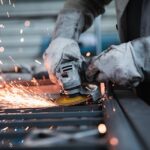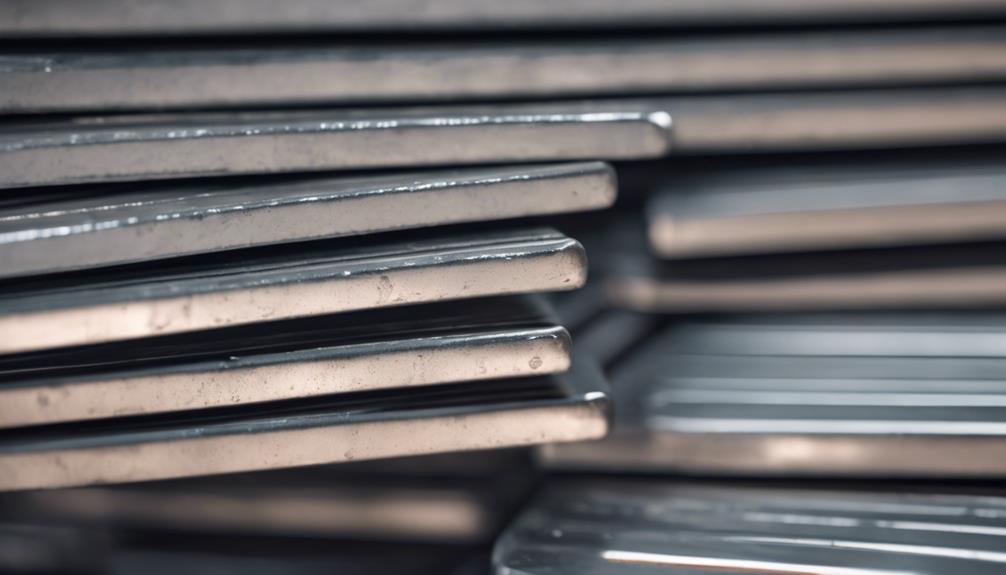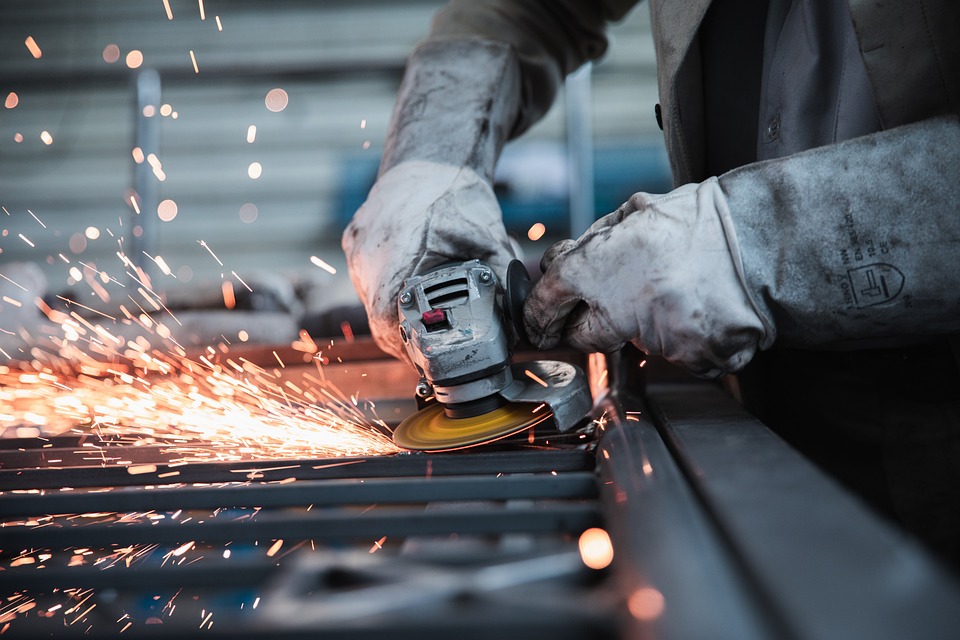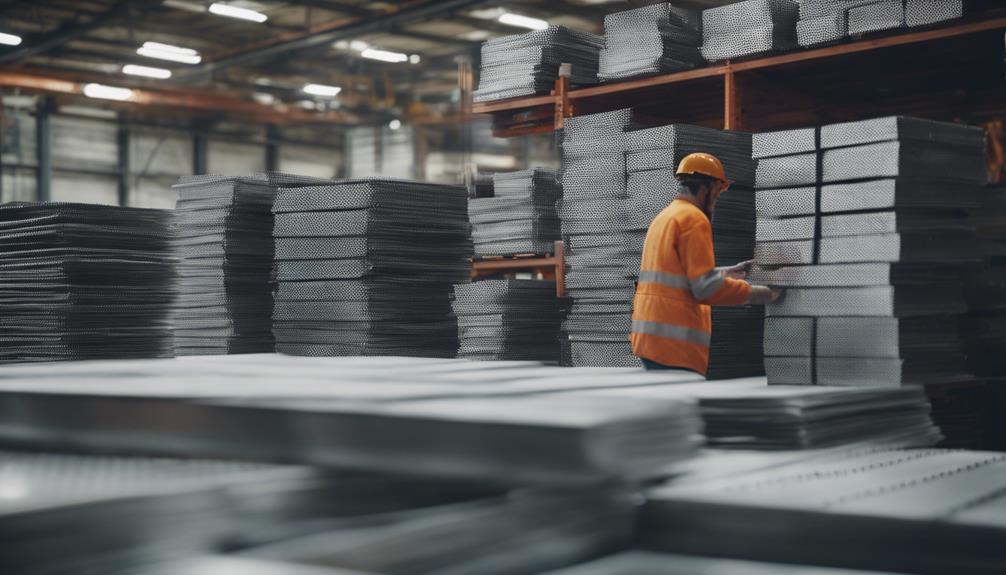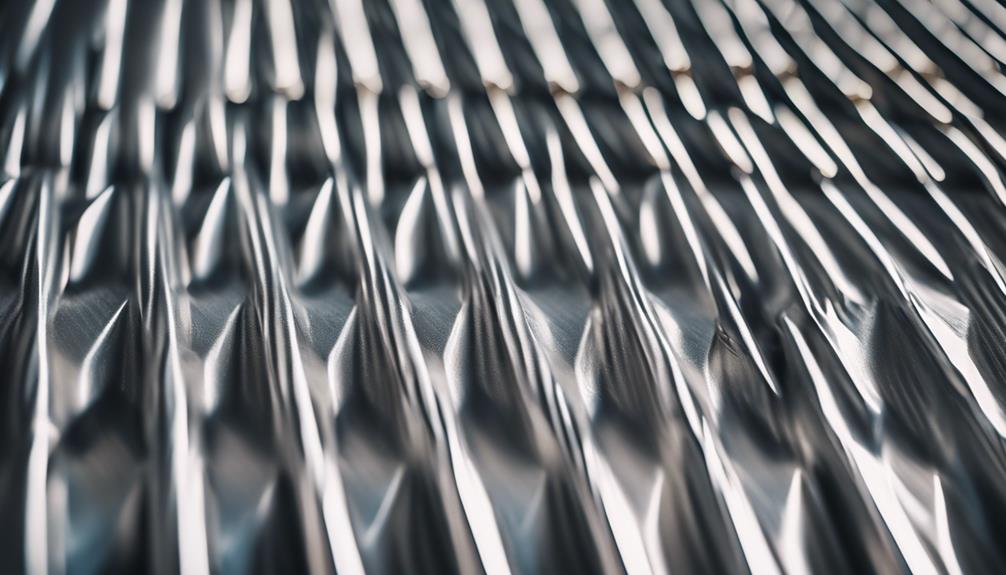Steel flat bars are vital metal products offering structural support and reinforcement in construction and manufacturing industries. Available in ASTM A569 and A36 variants, steel flat bars come in various sizes and finishes to suit different project requirements. A36 steel flat bars, for instance, are known for their welding properties, machinability, and wear resistance, making them ideal for diverse applications. Understanding the key characteristics and mechanical properties of steel flat bars is essential for ensuring their suitability for specific projects. If you want to explore more about the types, sizes, and benefits of steel flat bars, the detailed research provides valuable insights for informed decision-making.
Key Takeaways
- Steel flat bars available in ASTM A569 and A36 variants for diverse thickness ranges and finishes
- A36 steel known for excellent welding and machining properties, fair wear resistance, and specific mechanical characteristics
- Customizable sizes from 2ft to 20ft or cut-to-size options for versatile applications
- Different types of finish impact applications, with A569 for a polished look and A36 for structural projects
- Consider project requirements, corrosion resistance, strength, cost, and availability when choosing the right steel flat bar
Steel Flat Bar Specifications
Steel flat bar specifications outline the precise dimensions and material characteristics of these versatile metal components. Available in ASTM A569 for thicknesses ranging from 1/16 to 3/16, and A36 for 1/4 inch and over, these steel flat bars cater to various industrial needs. A569 steel flat bars boast a smooth finish, while A36 steel flat bars exhibit a slightly grainy mill finish. The A36 variant is known for its excellent welding properties, good machining capabilities, and fair wear resistance. With a yield point of 36,000 psi, tensile strength ranging from 48,000 to 80,000 psi, and a Brinell hardness of 133, steel flat bars in different sizes, such as 2ft to 20ft or custom cut, offer flexibility for diverse applications.
Types of Finish for Steel Flat Bar
When considering steel flat bars, the types of finish applied to these metal components play a significant role in determining their suitability for various applications. Carbon steel flat bars, such as A569 and A36, exhibit different finishes that cater to specific needs. A569 steel flat bars typically feature a smooth finish, making them ideal for applications requiring a polished appearance. On the other hand, A36 steel flat bars often have a slightly grainy mill finish, suitable for structural projects. The finish of A569 steel enhances its weldability, while A36 steel is favored for its machining and grinding capabilities. A36 steel flat bars are known for good bending and forming properties, although they offer fair wear resistance and limited corrosion resistance.
Key Characteristics of Steel Flat Bar
Among the essential features defining steel flat bars are their notable welding capabilities, machining properties, bending/forming characteristics, wear resistance, and corrosion susceptibility. While they exhibit excellent welding attributes and good machinability, steel flat bars may pose challenges regarding corrosion resistance. This susceptibility to corrosion necessitates proper maintenance and protective coatings to enhance their longevity and performance in various applications. Users should be aware of this characteristic and take appropriate measures to mitigate the effects of corrosion, ensuring the durability and reliability of steel flat bars in structural, mechanical, and general-purpose projects. Understanding the limitations regarding corrosion resistance is vital for maximizing the utility and effectiveness of steel flat bars in diverse industrial and construction settings.
A36 Mechanical Properties of Steel Flat Bar
A36 steel flat bars are characterized by a yield point of 36,000 psi and a tensile strength ranging from 48,000 to 80,000 psi, making them a reliable choice for various structural and construction applications. As hot rolled steel, A36 flat bars exhibit good ductility with an elongation of 23% in 2 inches, allowing for flexibility in applications. Additionally, the Brinell hardness of 133 guarantees suitability for structural use. With a high melting point of 2600°F, A36 steel flat bars can withstand elevated temperatures, expanding their potential for diverse projects. Additionally, their excellent welding properties make them ideal for fabrication processes, enhancing their appeal in construction and manufacturing industries.
Available Stock Sizes for Steel Flat Bar
Steel flat bars are readily available in a range of stock sizes, offering flexibility for various project needs. These metal flat bars typically range from 2ft to 20ft in length, with options for customization like cut-to-size services. Common stock lengths may vary slightly, approximately by +/- 1/4, providing versatility to meet different project requirements. Standard sizes such as 1 Ft., 2 Ft., 4 Ft., 6 Ft., 8 Ft., and 10 Ft. are commonly stocked for convenience. The weight per foot of steel flat bars can vary, with examples like 2.55 lb/ft for 1/8 x 8 Hot Rolled Steel Flat. Custom cutting options for steel flat bars offer tolerances of around +/- 1/8, enabling precise sizing tailored to specific needs.
How to Measure Steel Flat Bar
When determining the dimensions of a steel flat bar, precision in measuring the thickness, width, and length is vital for accurate fabrication and fitting. To measure the thickness of flat bars, use a caliper or micrometer for precise readings. The width can be determined by measuring the distance across the top surface from one edge to the other. For finding the length, use a tape measure or ruler to measure from one end to the other. It is essential to maintain accuracy by measuring in inches or millimeters, depending on the preferred unit of measurement. Consistency in measuring steel flat bars is paramount for successful cutting, shaping, and fitting into specific applications.
Metal Stock Sizes at The Home Depot
Metal stock sizes at The Home Depot typically range from small to large dimensions to cater to various project needs. Steel flat bars are available in sizes varying from 1/8 x 1/2 to 3/16 x 1/2 inches. These bars feature a rough, blue-grey finish with dull rounded edges and inexact dimensions throughout their length. Common applications for these A36 hot rolled steel flat bars include shelving, sculptures, trim, bracing, and brackets. The steel's ASTM A36 characteristics, such as good welding, forming, and machining properties, make it a versatile choice for construction projects. Customers also have the option for custom cuts at The Home Depot to make sure the steel flat bars meet their specific project requirements.
Brands Offering Steel Flat Bars
With a focus on the variety and quality of steel flat bars available, notable brands such as Hillman and Steelworks stand out as prominent suppliers in the market. These brands offer a range of rolled steel flat bars in various sizes and materials, suitable for general purpose projects and construction applications. Hillman provides mill finished aluminum and hot rolled steel flat bars, catering to different needs. On the other hand, Steelworks specializes in interior/exterior plain hot rolled steel solid flat bars, offering versatility in dimensions for various projects. Both brands are known for their reliable products and commitment to providing high-quality steel flat bars to meet the demands of different industries.
Hot Rolled Steel Flat Bar Accessories
Hot Rolled Steel Flat Bar Accessories guarantee the structural integrity and functionality of hot rolled steel flat bars in various industrial and construction applications. These accessories are specifically designed to enhance the versatility of flat bars, offering solutions for joining, fastening, and supporting flat bar components. Common accessories include flat bar brackets, connectors, end caps, and decorative elements that add both aesthetic appeal and practical value to flat bar installations. By incorporating these accessories, users can optimize the performance of hot rolled steel flat bars in applications such as shelving, sculptures, trim, bracing, and brackets. The compatibility and reliability of these accessories ensure a seamless integration with A36 hot rolled steel flat bars, enhancing their overall utility and effectiveness.
Insider Tips for Steel Flat Bar Buyers
What key considerations should buyers keep in mind when purchasing steel flat bars? When buying steel flat bars, it is important to pay attention to whether the bars are hot rolled or cold rolled. Hot rolled steel flat bars are generally more affordable and easier to work with due to their malleability and lower strength compared to cold rolled bars. However, cold rolled steel flat bars offer a smoother surface finish and tighter tolerances, making them ideal for applications requiring precision. Consider the specific requirements of your project to determine which type of rolled steel flat bar would be most suitable. Additionally, make sure that you are purchasing the appropriate grade and size to meet the structural demands of your application.
Frequently Asked Questions
How Strong Is Steel Flat Bar?
Steel flat bars exhibit impressive strength characteristics with tensile strengths typically ranging from 48,000 to 80,000 psi. This strength, combined with a yield point of 36,000 psi, underscores the material's resilience and suitability for structural applications.
What Type of Steel Is Flat Bar?
Flat bars are commonly made from carbon steel, such as ASTM A36 or ASTM A569. These materials offer good strength and versatility for structural and mechanical applications. The choice of steel type for flat bars depends on the project requirements.
What Size Are Standard Flat Bars?
Standard flat bars come in various sizes ranging from 1/8 inch to 3/16 inch in thickness. Width options include 1/2 inch, 3/4 inch, and 1 inch. Lengths commonly available are 4 feet, 6 feet, 8 feet, 10 feet, and 20 feet.
What Is Flat Metal Called?
Flat metal, commonly known as a 'flat bar,' is a long, rectangular piece of metal with a flat surface and straight edges. It is versatile and used in various applications due to its ease of welding, bending, and shaping.





